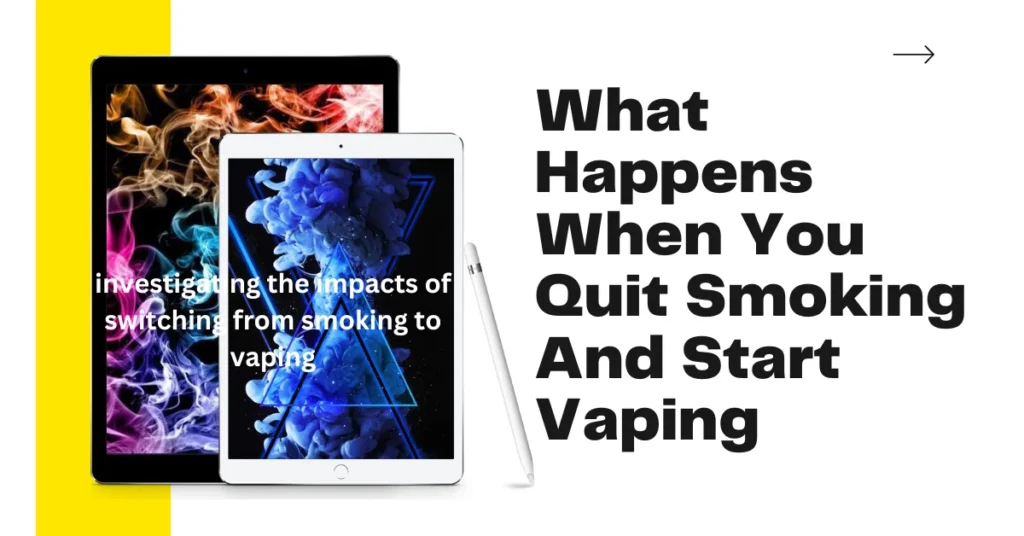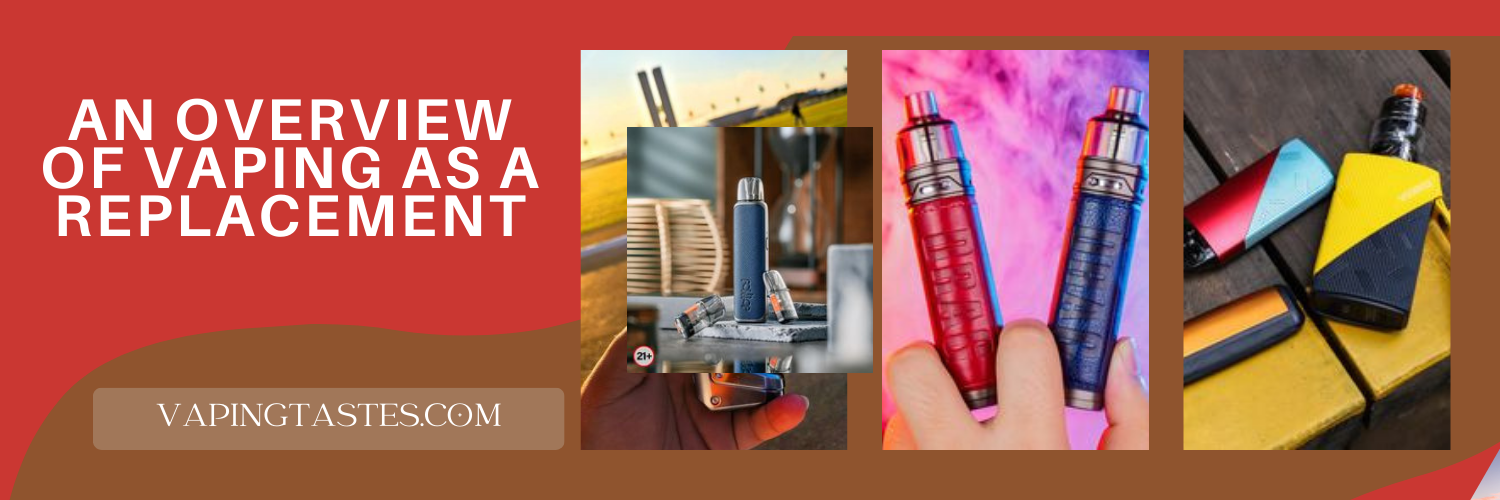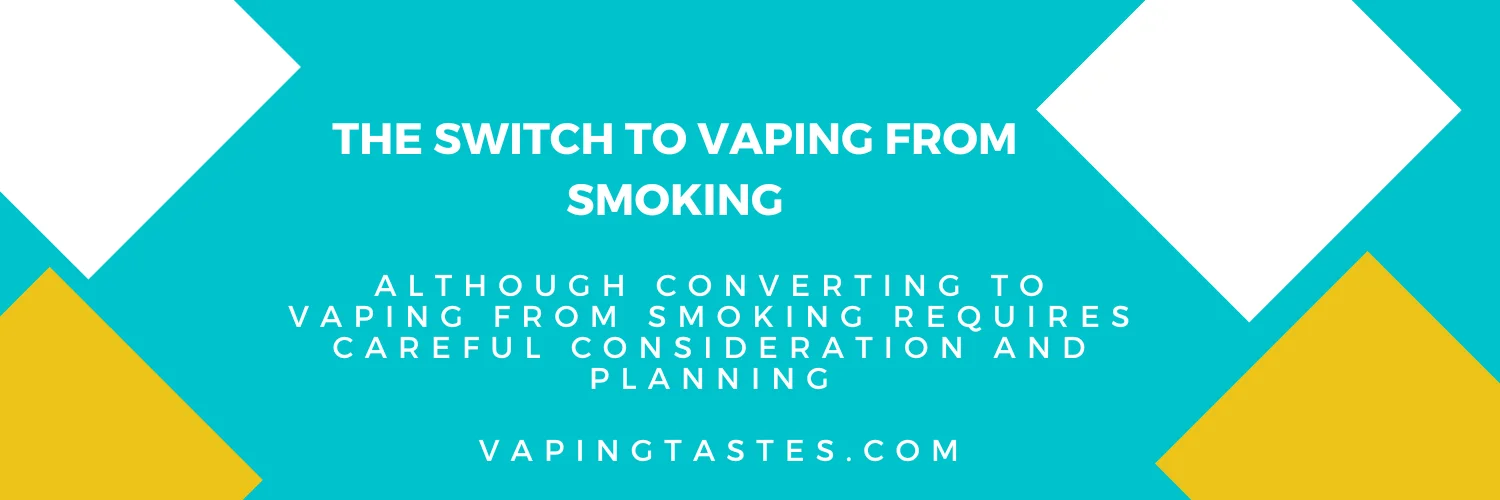What Happens When You Quit Smoking And Start Vaping
Introduction
Quitting smoking is one of the hardest but most gratifying measures you can take for your health when it comes to tobacco addiction. Given the well-known negative consequences of smoking, many people want to end their dependence on cigarettes.
This is easier said than done, however. Fortunately, technological developments have produced alternatives like vaping, which is becoming more and more well-liked among those trying to quit smoking.
This essay will examine what occurs when you stop smoking and switch to vaping, illuminating both the possible advantages and drawbacks of this change. (What Happens When You Quit Smoking And Start Vaping)
Knowing the Health Effects of Smoking (What Happens When You Quit Smoking And Start Vaping)
Before examining the effects of quitting smoking and transitioning to vaping, it is essential to comprehend the health risks associated with smoking. Smokers are exposed to a number of harmful substances, including nicotine, tar, carbon monoxide, and other carcinogens.
Lung cancer, heart disease, stroke, respiratory diseases, and other ailments are just a few of the dreadful things that these chemicals may cause to the body.
Examining the Advantages of Giving Up Smoking
The benefits of quitting smoking include bettering one’s physical and emotional health. Let’s look more closely at some of the advantages that await smokers who successfully quit:
Enhanced lung health:
Smoking damages the lungs and lowers their ability to function at their peak levels. When you quit smoking, the condition of your lungs gradually becomes better, leading to bigger lung capacities and easier breathing.
Reduced risk of heart disease:
The majority of the blame for heart disease, the biggest killer in the world, lies with smoking. By quitting smoking, you may significantly reduce your risk of developing cardiovascular diseases such as heart attacks, high blood pressure, and blocked arteries.
Increased ability to taste and smell:
Smoking eventually impairs a person’s sense of taste and smell. However, if you quit smoking, your taste buds and olfactory receptors begin to regenerate, enhancing your capacity to perceive flavours and aromas.
Increased energy:
Smoking lowers energy levels and might leave you feeling worn out. When you quit smoking, you could feel more alive and energised, which might result in a more fulfilling and active life. (What Happens When You Quit Smoking And Start Vaping)
An Overview of Vaping as a Replacement
Smokers now have a chance to successfully quit by converting to vaping, which has grown to be a popular smoking alternative.
Inhaling vapour created by electronic cigarettes or vape pens heating e-liquids is the practice of vaping. This method provides a way to simulate smoking. (What Happens When You Quit Smoking And Start Vaping)
How Vaping Operates
Understanding the effects of transitioning from smoking to vaping requires an understanding of the mechanics of vaping. A vaping device is made up of a battery, an atomizer or heating element, and a cartridge or tank to hold the e-liquid.
When the device is switched on, the battery powers the heating element, which induces the e-liquid to evaporate and create inhalable vapour. Users have a variety of flavoured e-liquid options to customize their vaping experiences. (What Happens When You Quit Smoking And Start Vaping)
The Switch to Vaping from Smoking
Although converting to vaping from smoking requires careful consideration and planning, it is a viable option. Some crucial factors for the changeover include the following:
Due to the availability of e-liquids with various nicotine concentrations, users may gradually reduce their nicotine use over time. Smokers who are addicted to nicotine could find this to be extremely helpful.
Selecting the right vaping product: There is a wide range of vaping goods available, each with unique features and functions. It’s crucial to choose a device that fits your needs and preferences.
Reduce nicotine intake gradually: Many vapers choose to gradually reduce their nicotine intake in order to finally quit using it. This tactic could make the transition easier and aid in controlling urges.
Health Effects of Vaping and Smoking Cessation
While some of the health effects of transitioning from smoking to vaping may become apparent immediately, others could take some time to fully manifest. These are a few potential benefits of this transition:
Lessened exposure to dangerous chemicals:
Customers who vape are exposed to a lot fewer toxic toxins than those who smoke. By eliminating combustion and the burning of tobacco, many of the dangerous substances included in cigarettes may be avoided.
Potential gains in respiratory health:
Smoking causes substantial respiratory system damage and a variety of respiratory issues. Some smokers who switch to vaping report better breathing and lung capacity, while research into the long-term effects of vaping is continuing. (What Happens When You Quit Smoking And Start Vaping)
Benefits for the cardiovascular system:
Cardiovascular system advantages:
Quitting smoking is known to improve cardiovascular well-being since it plays a significant role in heart disease. Initial research suggests that transitioning to vaping may potentially have cardiovascular benefits equivalent to those seen after quitting smoking, but further research is needed.
Since vaping is a recent phenomenon, researchers are actively looking into its long-term effects. It’s important to keep up with the latest scientific findings and to approach vaping carefully, especially for those who have never smoked.
There are a number of possible impacts and changes that might happen when you stop smoking and switch to vaping.
The following table lists some of the typical elements associated with giving up smoking and switching to vaping:
| Aspect | Quitting Smoking | Starting Vaping |
|---|---|---|
| Nicotine Dependency | The gradual reduction in nicotine dependency as you cease smoking tobacco cigarettes. | Continued nicotine intake through vaping, but with the ability to control nicotine levels. You can gradually reduce nicotine concentration if desired. |
| Withdrawal Symptoms | Initially experience withdrawal symptoms such as cravings, irritability, anxiety, and difficulty concentrating. These symptoms gradually subside over time. | Withdrawal symptoms are usually reduced or eliminated as vaping provides a nicotine source. However, you may experience minor adjustments in the beginning due to changes in nicotine delivery and vaping technique. |
| Physical Health | Improved lung function, reduced risk of lung diseases, decreased coughing, and improved cardiovascular health. | Vaping may be considered less harmful than smoking, but its long-term effects on health are still being studied. It is generally believed to be less harmful to the respiratory system than smoking tobacco. |
| Secondhand Effects | Elimination of secondhand smoke, which can be harmful to others around you. | Secondhand exposure to vapor is generally considered to be less harmful than secondhand smoke, but it is still advisable to minimize exposure to non-vapers, especially in enclosed spaces. |
| Sense of Taste and Smell | Gradual improvement in the sense of taste and smell. | Some vapers report an enhanced sense of taste and smell after transitioning from smoking, but individual experiences may vary. |
| Cost | Significant savings due to not purchasing tobacco cigarettes. | Vaping can still incur costs, but it is generally considered to be more cost-effective than smoking in the long run. |
| Social Acceptance | Reduction in social stigma associated with smoking. | Vaping is perceived differently by different individuals and communities. While it may be more socially acceptable in some circles, it may still be subject to scrutiny or restrictions in certain settings. |
While vaping is often seen as a tool for smokers to reduce their damage, it is crucial to remember that it comes with its own hazards and uncertainty.
It is advised to speak with healthcare experts or specialists who can provide specialized advice and assistance if you are thinking about quitting smoking and switching to vaping.
Common erroneous beliefs about vaping
Despite its potential as a smoking cessation aid, vaping has been the subject of certain urban legends. Let’s talk about a few common concerns regarding vaping:
Acceptance among children: Concerns have been raised about vaping among children. While it’s vital to prevent youngsters from using e-cigarettes, it’s also crucial to keep in mind that the majority of vapers are smokers who are now or formerly smoked and are searching for a less harmful alternative.
Although nicotine is addictive, smoking-related ailments are not primarily caused by nicotine. Because vaping allows users to regulate their nicotine intake, many users progressively reduce their usage or switch to nicotine-free e-liquids.
Exposure to secondhand vapor: Secondhand smoke from e-cigarettes often contains lower levels of dangerous chemicals than secondhand smoke from traditional cigarettes.
However, when it comes to vapor exposure, it’s important to be considerate of other people’s preferences and concerns.
Analysis of the Pros and Cons of Vaping
Weighing the advantages and disadvantages of each option—including vaping—is a necessary step in making an informed decision. Think about the following concepts:
Harm reduction tactic: Vaping is sometimes seen as a harm reduction tactic for smokers who are unable to quit using traditional methods.
Despite the fact that it is not completely risk-free, it is thought to be less harmful than smoking. (What Happens When You Quit Smoking And Start Vaping)
Individual interests and circumstances are what ultimately determine whether or not someone chooses to start vaping. While some individuals are able to successfully make the transition from smoking to vaping, other people could choose a different tactic. It’s important to consider what fits you best.
Research and arguments in favour
Many studies have examined the effects of transitioning from smoking to vaping. Research suggests that vaping may be an effective smoking cessation technique for certain individuals.
It is important to keep in mind that vaping carries risks, and further research is necessary to fully understand its long-term effects.
Stories from Former Smokers Who Now Use Vapes
Many ex-smokers who successfully made the move to vaping have spoken out about their personal experiences. These testimonials often mention improvements in overall health, including improved respiratory function, more energy, and a reduced desire for smoking.
People who are considering transformation may find inspiration and sage guidance in personal stories. (What Happens When You Quit Smoking And Start Vaping).
Issues with Rules and Safety in the Vaping Industry
Regulation and safety are important considerations in the vaping industry. Governments and regulatory bodies all around the globe share the objective of developing rules and standards for vaping products.
It’s essential to purchase e-liquids and vaping materials from reputable suppliers in order to ensure quality and safety.
Advice for Smokers Who Are Thinking About Vaping
The following advice is provided for smokers who are considering transitioning to vaping:
- carry out extensive study Learn all you can about vaping, including its benefits and potential risks. Follow the most current research and suggestions from reputable sources.
- Consult a specialist: Consult with medical professionals, such as doctors or smoking cessation specialists, who may provide specific guidance based on your particular circumstances.
- Start with the appropriate tools and nicotine dosage: Select a vaping device that suits your needs and begin with a nicotine dose that is equal to the number of cigarettes you now smoke. Reduce your nicotine consumption over time if desired.
- From the wide range of e-liquid types available, try several flavors to find the ones you enjoy. Your vaping experience might be enhanced, making the switch more enjoyable.
1. Can Vaping Replace Smoking as a Safer Alternative?
While vaping is often seen as a less dangerous option to smoking, it’s important to remember that there are still certain risks involved.
By using a vaporizer, you may avoid combustion, which produces many of the dangerous compounds in cigarette smoke. To completely grasp the long-term implications of vaping, further study is necessary.
2. What are the advantages of switching from smoking to vaping?
There are a number of advantages to switching from smoking to vaping, including:
- less exposure to the toxic substances in cigarette smoke.
- Improved respiratory health and lung capacity.
- Savings could be possible in comparison to buying regular smokes.
- Individual tastes may be accommodated by a variety of flavors and nicotine levels.
3. When I stop smoking, would I experience withdrawal symptoms?
The signs of nicotine withdrawal might differ from person to person. While some people may only have modest symptoms like irritation, cravings, or headaches, others may suffer more severe symptoms.
Nicotine may be delivered in a regulated way via vaping to aid with these symptoms.
4. Can Vaping Aid My Smoking Cessation?
Vaping may be a useful aid for quitting smoking. Many former smokers who switched to vaping over time effectively cut down on their nicotine usage.
However, it’s crucial to consider vaping as a way to completely stop smoking and not as a long-term replacement.
5. Will I Miss the Smoking Sensation?
Although the experience of vaping may be a little different from that of smoking, many users believe it to be an adequate substitute.
A similar throat hit, vapor inhalation, and vapor exhalation may be obtained by vaping. The broad variety of flavors that are offered in vape juice also enhances the overall fun.
6. How Much Time Does Vaping Adjustment Take?
The time needed for acclimation differs from person to person. While some people adjust to vaping fast, others could take a little longer.
When transitioning, it’s important to have patience since it could take some trying out with various flavors, nicotine levels, and vaping equipment until you discover what works best for you.
7. Where Can I Vape?
Depending on where you live, different laws apply to vaping. While smoking is often less acceptable in public places than vaping, it’s still necessary to adhere to any venue’s laws and regulations.
While some locations could have designated vaping spaces, others might outright forbid it.
8. Does Vaping Have Any Negative Effects?
Dry mouth, sore throat, coughing, and minor discomfort are typical adverse effects of vaping. As your body becomes used to vaping, these symptoms normally go away.
It is advised to speak with a healthcare provider if you develop severe or persistent adverse effects.
9. How Do I Pick the Best Vaping Equipment?
The best vaping device for you will depend on your tastes and objectives. The device’s size, usability, battery life, and customizability are important considerations.
Read reviews, do some research on various sorts of devices, and think about consulting expert vape store personnel or seasoned vapers for assistance.
10. With what nicotine concentration should I begin?
Your smoking history and level of nicotine dependency will determine the proper nicotine strength. While mild smokers or individuals who have previously cut down on their nicotine usage may pick lower levels, heavy smokers may initially prefer greater nicotine strengths.
It is advised to begin with a modest strength and increase or decrease it as necessary.
11. Can Vaping Help Me Stop Smoking Completely?
Yes, vaping makes it easy to progressively cut down on your nicotine use and finally give up nicotine completely. Many vapers start with greater nicotine concentrations and progressively lower them over time.
Even nicotine-free choices are available in certain vape juices to help people stop.
12. How Should My Vaping Device Be Cared For And Cleaned?
For maximum performance and taste, your vaping equipment has to be cleaned and maintained regularly. For detailed cleaning recommendations that apply to a particular piece of equipment, see the manufacturer’s instructions.
In most cases, it entails taking the gadget apart, cleaning the parts with warm water or alcohol, and letting them dry before reassembly.
13. Can I Vape While Nursing or Pregnant?
Vaping is advised to be avoided during pregnancy and when nursing since the possible dangers to the mother and the unborn child are not yet completely recognized.
The components of vape juice may transfer into breast milk and nicotine exposure during pregnancy may have detrimental effects on fetal development.
14. If I switch to vaping, would I still have cravings?
Even after converting to vaping, cravings may still appear on occasion. Numerous things, such as psychological connections to smoking or certain circumstances, might cause cravings.
These urges usually disappear as you become used to vaping.
15. Can I Give Up Vaping After I Stop Smoking?
Vaping after giving up smoking is a personal decision. Some people use vaping as a long-term substitute while others progressively cut down on it until quitting completely.
To choose the best course of action for you, it’s critical to create objectives and evaluate your nicotine dependency.
You may choose how much nicotine is in your e-liquid when you transition from smoking to vaping. Starting with a greater nicotine dose and progressively lowering it over time are both options.
This satisfies cravings and lessens withdrawal symptoms while allowing your body to acclimate to decreased nicotine levels.
When you are comfortable using e-liquids with very little or no nicotine, you may start the process of stopping vaping completely. It’s crucial to make a strategy and create targets that suit your needs.
Remember that every person’s route to quitting is different, and it could take some time to entirely give up vaping. Be kind to yourself and acknowledge your progress at each step.
You can effectively stop vaping and have a nicotine-free life if you are determined and have the necessary assistance.
16. Are there any resources or support groups available to help people go from smoking to vaping?
For those who want to stop smoking and switch to vaping, there are several support groups and services available. These resources may provide helpful knowledge, direction, and a feeling of community to assist you in making the shift effectively. Here are some alternatives to think about:
Local vape stores often have competent employees who may provide advice and suggestions on vaping products, e-liquids, and quitting methods. They may also put you in touch with other vapers who could be experiencing a like trip.
Online Communities and Forums: Vaping and smoking cessation have a plethora of online communities and forums. There are active communities on websites like Reddit, Vaping Underground, and E-Cigarette Forum where you may ask questions, exchange experiences, and get support from other vapers.
Services for those who want to stop smoking: Many nations offer special hotlines that are intended to help people stop smoking. These services could provide information, suggestions, and assistance suited to your requirements.
Find out whether your region has a quitline service by contacting your local health department or doing an internet search. (What Happens When You Quit Smoking And Start Vaping)
Health Organizations: Numerous health organizations, including the National Health Service (NHS), American Cancer Society, and American Lung Association, provide tools and help for quitting smoking.
Their websites include advice on methods, resources, and ideas for quitting smoking so that you may eventually switch to vaping.
Mobile apps: You may monitor your progress, get inspirational messages, and use methods to control cravings with the help of a number of smartphone applications.
Examples include “Smoke-Free,” “QuitNow!,” and “MyQuit Coach.”
Healthcare Professionals: Speak with your doctor or an expert in tobacco cessation as your healthcare provider. They can give you individualized guidance, proper nicotine replacement therapy recommendations, and extra resources to aid in your quitting journey.
Keep in mind that these tools are there to support your own research and willpower to stop smoking. It’s critical to identify the assistance that fits your requirements and objectives the best and works best for you.
Your chances of success will be considerably increased by using these materials in conjunction with your own will to stop smoking and successfully switch to vaping. (What Happens When You Quit Smoking And Start Vaping)
Conclusion
Quitting smoking and starting vaping can be a positive step toward a smoke-free lifestyle. While vaping is not without its own considerations, it offers a potential pathway to reducing the harm associated with traditional smoking.
As with any significant lifestyle change, it’s important to gather information, consult with professionals, and make choices that align with your personal goals and well-being.
Giving up smoking is a significant step toward improving your health and wellness. Even though it could be challenging, there are a number of benefits to quitting that make the effort worthwhile.
Vaping is a choice for smokers who wish to stop reaching for their smokes. It may minimize harm and aid in quitting smoking by making the transition easier. However, it’s important to approach vaping prudently and stay up to date with the most current research and recommendations.
This is all about What Happens When You Quit Smoking And Start Vaping.





